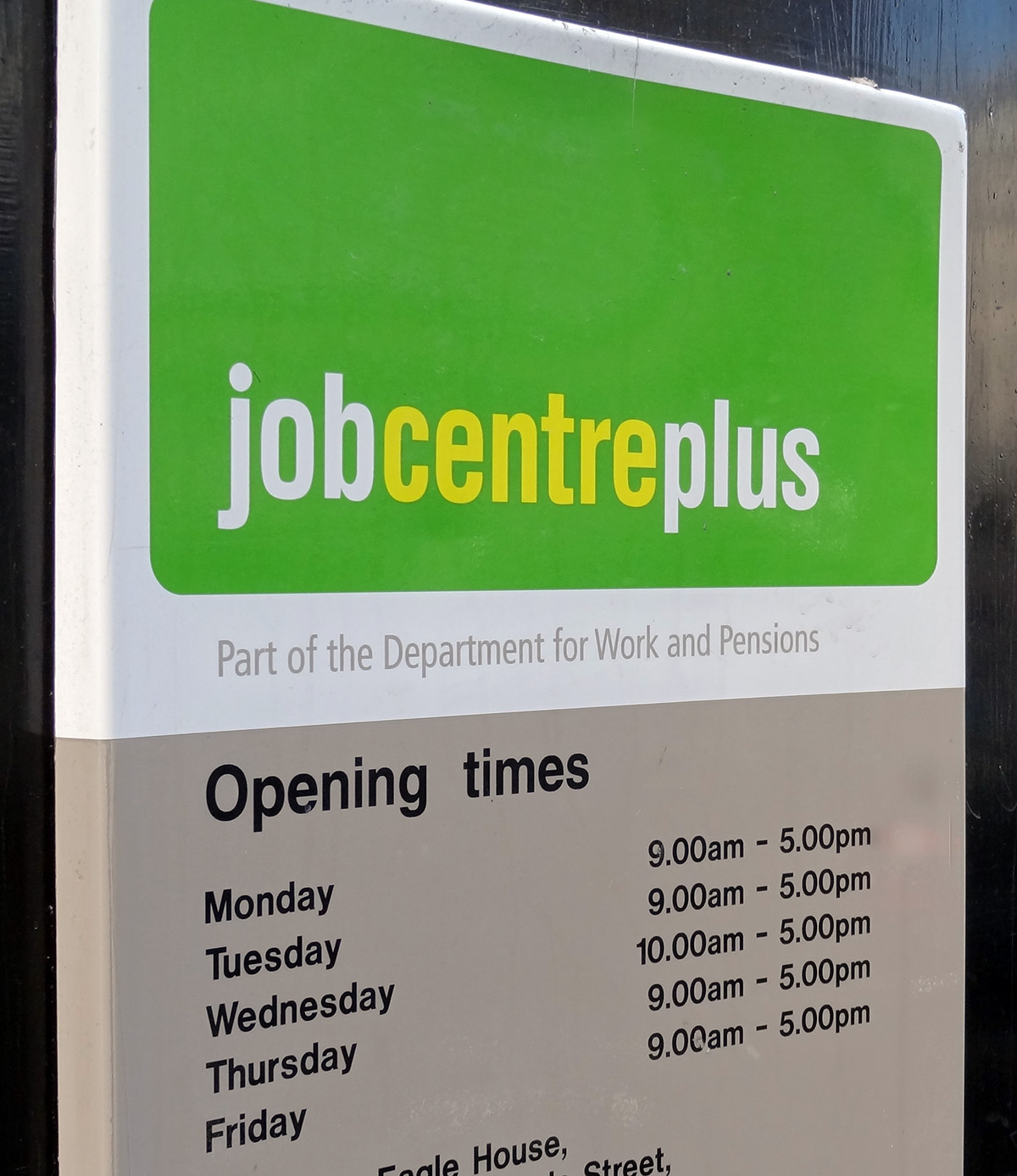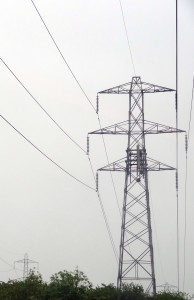 Next year a government agreement with insurance companies is set to end. This agreement requires insurance companies to provide cover for homes at a high risk of flooding.
Next year a government agreement with insurance companies is set to end. This agreement requires insurance companies to provide cover for homes at a high risk of flooding.
However, in June 2013, this agreement will no longer be in place and this has led to mounting concerns that it will leave thousands of home-owners with the inability either to find or afford home insurance.
The key thing with insurance is that in order for it to be provided privately, certain conditions must hold. The probability of the event occurring must be less than 1 – insurance companies will not insure against certainty. The probability of the event must be known on aggregate to allow insurance companies to calculate premiums. Probabilities must be independent – if one person makes a claim, it should not increase the likelihood of others making claims.
Finally, there should be no adverse selection or moral hazard, both of which derive from asymmetric information. The former occurs where the person taking out the insurance can hide information from the company (i.e. that they are a bad risk) and the latter occurs when the person taking out insurance changes their behaviour once they are insured. Only if these conditions hold or there are easy solutions will the private market provide insurance.
On the demand-side, consumers must be willing to pay for insurance, which provides them with protection against certain contingencies: in this case against the cost of flood damage. Given the choice, rational consumers will only take out an insurance policy if they believe that the value they get from the certainty of knowing they are covered exceeds the cost of paying the insurance premium. However, if the private market fails to offer insurance, because of failures on the supply-side, there will be major gaps in coverage.
Furthermore, even if insurance policies are offered to those at most risk of flooding, the premiums charged by the insurance companies must be high enough to cover the cost of flood damage. For some homeowners, these premiums may be unaffordable, again leading to gaps in coverage.
In light of the agreement coming to an end next year, there is pressure on the government firstly to ensure that insurance cover is available to everyone at affordable prices and secondly to continue to build up flood defences in the most affected areas. Not an easy task given the budget cuts. The following articles provide some of the coverage of the problems of insuring against flood damage.
Articles
200,000 homes ‘at flooding risk’ BBC News (3/1/12)
MPs slam government flood defences Post Online, Chris Wheal (31/1/12)
Flooding: 200,000 houses at risk of being uninsurable The Telegraph (31/1/12)
Flood defences hit by government cuts ‘mismatch’, says MP Guardian, Damian Carrington (31/1/12)
Fears over cash for flood defences The Press Association (31/1/12)
ABI refuses to renew statement of principles for flood insurance Insurance Age, Emmanuel Kenning (31/1/12)
Questions
- Consider the market for insurance against flood damage. Are risks less than one? Explain your answer
- Explain whether or not the risk of flooding is independent.
- Are the problems of moral hazard and adverse selection relevant in the case of home insurance against flood damage?
- If ABI doesn’t put in place another agreement to provide insurance to homeowners at most risk of flooding, what could be the adverse economic consequences?
- Is there an argument for the government stepping in to provide insurance itself?
- Explain why insurance premiums are so much higher for those at most risk of flooding. Is it equitable?
 In the third quarter of 2011, the UK economy grew by 0.6% – nothing to shout about, but at least it was positive. Since then there has been growing concern about the state of the recovery with many commentators widely expecting to see much lower growth in the final quarter of last year.
In the third quarter of 2011, the UK economy grew by 0.6% – nothing to shout about, but at least it was positive. Since then there has been growing concern about the state of the recovery with many commentators widely expecting to see much lower growth in the final quarter of last year.
Today, those commentators were proved right, as official figures released show the UK economy shrank by 0.2%. It doesn’t mean we’re in a recession (that requires 2 successive quarters of negative growth), but if growth doesn’t pick up in quarter 1 of 2012, then ‘Double-Dip Recession’ headlines will fill the front page.
Despite the disappointment that the UK economy has shrunk, the figures were not wholly unexpected, especially given the data released a week or so before, which showed unemployment had risen. Furthermore, with the crisis in the eurozone and many other countries still struggling to mount an economic recovery, there have been few external stimuli for the UK.
Although the fall in growth was larger than expected (0.2% as opposed to the predicted 0.1%), the UK economy is expected to grow throughout 2012. However, the IMF has reduced its forecast annual growth rate from 1.6% to 0.6%. The economic climate for 2012 remains uncertain and much will depend on developments in the eurozone. Further problems could spell trouble, but if there is an improvement in the fortunes of Europe, confidence could return to the markets and economic recovery could be faster. Ian McCafferty, the Chief Economic Adviser of the CBI said:
While the acute fears seen at the end of last year over global demand may be subsiding, 2012 will prove to be a difficult year for UK manufacturing, as the crisis in the eurozone – our biggest export market – has yet to reach any definitive resolution.
Whether or not we do move into a double-dip recession is uncertain and following this latest data, many commentators say it is a 50:50 change; and even then it hinges on many factors. However, even if quarter 1 of 2012 sees negative growth and hence a return to recession for the UK, Chris Williamson from Markit said that ‘there are growing indications that any downturn is likely to be ‘mild and short-lived’. The following articles consider the state of the UK economy.
Unemployment to soar as UK heads back into recession The Telegraph, Philip Aldrick (25/1/12)
UK economy shrinks by 0.2% in last 3 months of 2011 BBC News (25/1/12)
UK GDP: what the economists say Guardian (25/1/12)
UK recession threat: can we dodge the double dip? Citywire, Chris Marshall (25/1/12)
Double-dip recession fears as UK economy shrinks 0.2 percent Independent, Peter Cripps (25/1/12)
PM says ‘no complacency’ on economy Financial Times, Norma Cohen and Elizabeth Rigby (25/1/12)
The UK economy is shrinking. Time to listen to gloom-mongers? Guardian, Phillip Inman (25/1/12)
UK economy shrinks in Q4, raising recession fears The Associated Press (25/1/12)
FTSE CLOSE: Stocks slide as 0.2% GDP fall sparks recession fears; banks among the biggest fallers This is Money (25/1/12)
Sorrell: ‘UK will avoid double-dip recession’ Sky News, Tom Rayner (25/1/12)
Recovery in rehab BBC News, Stephanie Flanders (25/1/12)
Questions
- How is a recession defined? What are the typical characteristics of a recession? (Think about the macroeconomic objectives).
- Which particular sectors of the UK economy were the most severely affected in Q4 of 2011?
- Examine the main causes of the UK’s decline in national output.
- Which of the causes identified in question 3 do you think is the key factor keeping UK national output from growing? Explain your answer.
- Why is there a growing presence of companies from emerging markets in the top 100?
- Why are many commentators suggesting that even if the UK goes into a recession, it is likely to be ‘mild and short-lived’?
- What has happened to stock markets following the release of this latest economic data?
- Evaluate the options open to the Coalition government in stimulating the UK economy. To what extent would your policy solution damage the Coalition’s aim of cutting the UK’s structural budget deficit?
 Every firm has been hit by the recession and for most, it’s been bad news. However, the latest firm to file for bankruptcy is an interesting case, as the causes extend well beyond a weak economy. The company in question? Eastman Kodak. Renowned for inventing the hand-held camera and being the market leader, selling 90% of photographic film and 85% of all cameras in the USA in 1976, the company has since seen a large change in its fortunes.
Every firm has been hit by the recession and for most, it’s been bad news. However, the latest firm to file for bankruptcy is an interesting case, as the causes extend well beyond a weak economy. The company in question? Eastman Kodak. Renowned for inventing the hand-held camera and being the market leader, selling 90% of photographic film and 85% of all cameras in the USA in 1976, the company has since seen a large change in its fortunes.
Massive competition has emerged from all over the globe and the company has seemed to lag behind the digital revolution. Arguably, unwilling to take risks and making some strategic errors, Kodak saw its stock tumble from $94 in 1997 to under $1 per share in 2012. Since 2004, Kodak has only seen one profitable year. With massive competitors in the world of digital photography, the market has become a highly competitive one. As Rupert Goodwins, the editor of technology website ZDNet said:Kodak made all its money from selling film, then the digital camera came along and now no-one’s buying film. It’s not like they didn’t see it coming. Kodak hesitated because they didn’t want to eviscerate their business.
By filing for bankruptcy, Kodak is protected and its operations will continue for the time being, perhaps giving the company time to have a rethink and a reorganization. Eastman Kodak has previously tried to take a new direction and has been moving away from film and towards its printer, software and packing businesses. The problem is that these markets already have some very strong competitors: Hewlett Packard, Canon and Epson. It’s a difficult job to break into this market and gain market share.
The future of the company is very much in the balance and as reorganization of its operations looks inevitable, so does a loss of jobs. Thank goodness it only employs some 19,000 workers and not the 145,000 it did back in its day. Bankruptcy will certainly keep the creditors at bay for the time being, but it is by no means a long term solution to the company’s ailing profits. The following articles consider this ‘Kodak moment’.
Eastman Kodak files for bankruptcy protection BBC News (19/1/12)
Eastman Kodak files for bankruptcy The Christian Science Monitor, Ben Dobbin (19/1/12)
Kodak: From Brownie and roll film to digital disaster BBC News, James Cowling (19/1/12)
Kodak files for bankruptcy CNN Money, Aaron Smith and Hibah Yousuf (19/1/12)
Photography pioneer Kodak files for bankruptcy Reuters, Jonathan Stempel (19/1/12)
Kodak: 30 fascinating facts The Telegraph, Matthew Sparkes (19/1/12)
Kodak: why the moment has oassed Guardian, Simon Waldman (19/1/12)
Questions
- Using the product life cycle, explain where Kodak currently lies.
- To what extent are Kodak’s current problems related to the obsolescence of their products and not the recession?
- What strategic errors have Kodak made?
- What has caused Kodak’s collapse in share prices and profitability?
- Why is Eastman Kodak finding it difficult to gain market share in other markets, such as printing?
- What options are open to Kodak for the future if it is to become profitable once more?
 Disagreements are hardly an uncommon occurrence during Prime Minister’s Questions and today the key issue up for debate was UK unemployment. Figures released show that in the 3 months to November 2011, UK unemployment rose to 2.685 million – an increase of 118,000. The ONS said that unemployment now stands at 8.4% – the highest figure in well over a decade.
Disagreements are hardly an uncommon occurrence during Prime Minister’s Questions and today the key issue up for debate was UK unemployment. Figures released show that in the 3 months to November 2011, UK unemployment rose to 2.685 million – an increase of 118,000. The ONS said that unemployment now stands at 8.4% – the highest figure in well over a decade.
However, the increase in unemployment is not as high as it was in the 3 months previous to that, which is possibly an indication that the labour market is slowly beginning to recover and the government’s labour market policies are starting to take effect. The government claimed that cuts in the public sector will be compensated by growth in private sector jobs, but the evidence from the ONS did little to back this up.
The labour market is crucial for the recovery of the UK. Jobs mean income and income means consumer spending. If the job market remains uncertain and more people enter unemployment, consumer spending is likely to remain weak for some time. Chris Williamson, the chief economist at Markit:
The increase in unemployment, plus job security worries and low pay growth for those in work, means consumer spending may remain very subdued this year, despite lower inflation alleviating the squeeze on real incomes that caused so much distress to households in 2011.
One area of specific criticism leveled at the Coalition was the extent of youth unemployment, which reached 22.3%. Ed Miliband said the government had cut ‘too far and too fast’ and that it will be remembered for standing aside and doing nothing ‘as thousands of people find themselves unemployed’. The figures are clearly concerning, but the Coalition maintains that policies designed to tackle the labour market are beginning to take effect and over the coming months, the economy will begin to see a decline in the unemployment rate. The following articles look at the unemployment crisis.
Articles
UK unemployment rises to 2.8m Guardian, Heather Stewart (18/1/12)
Leaders clash in commons over jobless rise BBC News (18/1/12)
UK jobless rate hits new 17-year high Financial Times, Brian Groom (18/1/12)
Unemployment rise: reaction The Telegraph, Louise Peacock (18/1/12)
Unemployment total rises by 19000 The Press Association (18/1/12)
Politicians give cautious welcome as quarterly unemployment falls by 1000 in Wales WalesOnline, Claire Miller (18/1/12)
 Employment Minister: unemployment is too high The Telegraph (18/1/12)
Employment Minister: unemployment is too high The Telegraph (18/1/12)
 Chris Grayling: ‘Unemployment figures are complex’ BBC News (18/1/12)
Chris Grayling: ‘Unemployment figures are complex’ BBC News (18/1/12)
Data
Unemployment in graphics BBC News (18/1/12)
Data Tables: Labour Market Statistics Excel Spreadsheets ONS January 2012
Questions
- What type of unemployment is being referred to in the above articles?
- Explain the mechanism by which a recession will lead to higher unemployment.
- Using a diagram to help your explanation, analyse the impact of a fall in aggregate demand on the equilibrium unemployment rate and wage rate. What happens to unemployment if wages are sticky downwards?
- What can explain such different stories of unemployment between Scotland, England and Wales?
- What policies have the Coalition implemented to tackle the rising problem of unemployment? On what factors will their effectiveness depend?
- Why is the UK’s job market so important for the future economic recovery of the UK?
 In an earlier blog Energy profits margins up by over 700% we analysed the increasing pressure on many households as they saw their energy bills increase in price year on year. This helped the big six energy companies achieve a 700% rise in their profits.
In an earlier blog Energy profits margins up by over 700% we analysed the increasing pressure on many households as they saw their energy bills increase in price year on year. This helped the big six energy companies achieve a 700% rise in their profits.
However, it also sparked interest by the regulator Ofgem, which was looking to ensure that consumers found it easier to make price comparisons and create a more competitive market. One issue that Ofgem were looking into was how to make the energy sector more open to competition, given that the big six companies own the power stations and hence this acts as a barrier to the entry of new firms.
The latest announcements from some of the big energy companies will therefore come as a pleasant turn of events for Ofgem. On Wednesday January 11th 2012, EDF announced that it would be cutting its energy prices by 5% from 7th February in response to a fall in wholesale costs. Only a day later, Npower announced its plans to cut its tariffs by 5% from 1st February. British Gas cut its prices by 5% with immediate effect and SSE will reduce its gas prices by 4.5% from March 26th.
Is this a sign that the market is becoming more competitive thanks to Ofgem or is there another explanation? For the past 2 winters, temperatures have been consistently below freezing and hence demand for gas/electricity was at an all time high, speaking concerns of gas shortages. However, with the mild winter we are currently experiencing (I hope I haven’t jinxed it!) demand for heating etc has been significantly lower, which has reduced wholesale costs and the big six companies have begun to pass these savings on to their customers. Yet, despite this seemingly good news, are they being as ‘kind’ as we think? Most of the companies are cutting their prices by about 5%, yet wholesale prices fell by significantly more than that. Furthermore, over the past few years, customers have seen their tariffs increase significantly – by a lot more than 5%. To some extent, this confirms the criticism levelled at the energy sector – when costs rise, they are quick to pass on the full costs to their customers. But, when costs fall, they are slow to pass on only a fraction of their cost savings. The following articles consider this issue.
Npower will cut gas prices by 5% BBC News (13/1/12)
EDF cuts gas price by 5% Reuters, Karolin Schaps and Henning Gloystein (11/1/12)
British Gas readies push to promote price cut MarketingWeek, Lara O’Reilly (13/1/12)
British Gas cuts prices by 5% Independent (13/1/12)
Energy suppliers do battle in the war of modest price cuts The Telegraph, Emily Godsen (13/1/12)
British Gas and SSE follow EDF Energy price cut Financial Times, Guy Chazan and Sylvia Pfeifer (11/1/12)
British Gas cuts electricity prices, but keeps gas on hold Guardian, Hillary Osborne (12/1/12)
British gas and SSE announce price cuts (including video) BBC News (12/1/12)
More power firms cut energy tariffs The Press Association (12/1/12)
Questions
- In which market structure would you place the energy sector? Explain your answer.
- What is the role of Ofgem? What powers does it (and the other regulators have)?
- Using a demand and supply diagram to help you, explain why wholesale costs have fallen.
- Why have the energy companies only passed on about 5% of cost savings to their customers, despite falls in wholesale costs of significantly more than that?
- Do you think price wars are likely to break out in this sector? Are they in the interests of consumers?
- Why did energy prices increase so quickly last year and the year before? Use a diagram to help you.
 Next year a government agreement with insurance companies is set to end. This agreement requires insurance companies to provide cover for homes at a high risk of flooding.
Next year a government agreement with insurance companies is set to end. This agreement requires insurance companies to provide cover for homes at a high risk of flooding.



